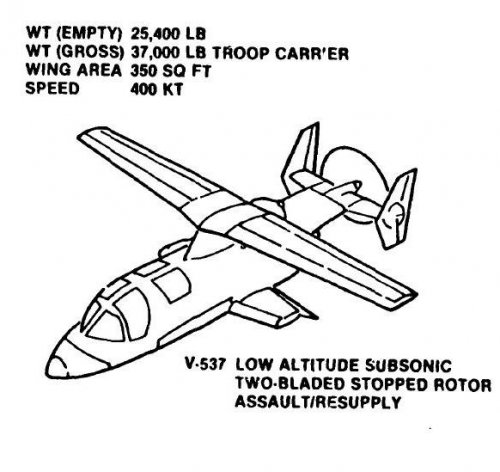Like the Army, the Marine Corps make extensive use of light disc loading aircraft. The primary use is in the vertical assault mission. Although there has been recent interest in the possibility of holding the amphibious ships at distances of up to fifty miles off shore, since the vast majority of the logistical supply must come across the beach, it appears likely that considerably smaller distances will be used in practice, particularly since studies indicate that the reduction of ship vulnerability scarcely warrants the problems associated with greater stand-off distances. In general, the landing sites selected for the vertical assault will be within 50 miles of the beach--usually far closer to avoid the possibility of the two assault forces (the one across the beach and the airborne one) being kept isolated from each other.
The result is that, although at one stage the distances from ship to landing site seemed large enough to place considerable emphasis on speed both for increased productivity and decreased vulnerability, more recent studies tend to emphasize the same factors that concern the Army, i.e., low downwash velocities and high lifting capacity. It is likely, therefore, that Marine Corps interest will center on evolutionary development of the helicopter with only minor interest in such devices as Tilt Rotors or ABC. In general, the high downwash velocities of the V/STOL A candidates make them impractical for assault missions.
- The Marine Corps concept of organic close air support is built
around the AV-8 aircraft. For some missions the combination of
this aircraft with armed helicopters is most efficient, but for
missions requiring penetration beyond the immediate forward edge
of the battle area (FEBA) the speed of the AV-8 seems essential.
Although not specifically designed to reduce battlefield vulnerability,
the AV-8B appears likely to be the best aircraft
available for the mission during the time period of concern.
- The existence of a first line V/STOL, STOL or STOVL fighter would
greatly aid the flexibility of Marine operations and would probably
be adopted if developed for Air Force or Navy application.

